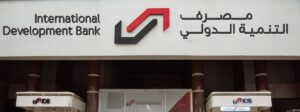So…..one of the longest bull markets in history; the Covid-19 pandemic; two trillion dollars invested in a digital pyramid scheme (Bitcoin et al); government borrowing on an unprecedented level to deal with the pandemic; real trade tensions between China and the West; post-quantitative easing unemployment set to rocket; the stock markets being manipulated by large groups of retail investors; a new market dynamic caused by digitalisation; markets back to pre-Covid-19 levels……..what is an investor to do?!
The only thing that is certain is that, in the words of Chinua Achebe, “Things Fall Apart”. It is not a matter of “if” but “when”. Most commentators would suggest that the “when” will be within a maximum of 24 months and many think much earlier.

So if there is a global recession/depression on its way and if markets are going to undergo a substantial correction it makes sense to diversify your investment portfolio to minimise the damage or perhaps benefit from the chaos. To do this most experienced investors will move to distance a substantial part of their investment assets from the wider economy and the falling markets – to invest in uncorrelated assets. It is likely to be between the next six and 24 months
First, it is important to understand the basic concept of asset correlation.
Also Read: Of Untold African Stories: The Dilemma of the African Writer.
Correlation is how the value of various assets corresponds with one another. It is typical for market movements to cause various diverse assets to move together in the same general direction. When that happens, it means those assets are correlated.
Assets can be completely non-correlated which means that the price movement of one has no impact on the other. They can also have a negative correlation—when the downward movement of one will mean the upward movement of the other.
The big issue for most portfolios is that their owners just do not understand how heavily correlated their money is. For example, a recession will cause individual property holdings to devalue or stagnate and will make them very illiquid. Most investors supplement their property wealth with traditional assets like stocks and bonds. Then they have some exposure to government borrowing in their country of residence where they have invested in “safe” assets such as treasury bills. The problem is that these examples are vulnerable to the same types of major market events. All of them will lose value and become less easy to liquidate at a time when liquidity may be the difference between survival and extinction.
And that is where non-correlated assets are so vital to an investor´s portfolio.
A non-correlated asset is one whose value is not tied to larger fluctuations in the traditional markets.
Of course in a worldwide recession or significant global event every asset is likely to be affected to a greater or lesser extent and so the skill is in identifying assets that are generally less reactive than stock markets and currencies to these market-moving events and the subsequent financial volatility.
So what might these assets be? There are a number that I include in my portfolio and these are as follows:
Commercial Property Loan Notes – As banks stop lending then developers look for other financing sources. Whilst lending your money to a developer building residential property in a troubled world would be suicidal there are a number of commercial property developments where the developer already has the tenant or buyer of the asset, the buyer is an AAA credit risk and all that is required is bridging finance.
REITs – Real Estate investments Trusts might sound anathema to someone who generally loathes real estate as an investment as I do! But REITS are less susceptible to major macroeconomic news than other types of investments because their prices are tied to things like long-term leases for which they are guaranteed revenue at a fixed and contracted level. They also offer a good hedge as inflation increases and have no real correlation to the stock market. (https://glasshousefarms.org)
Gold and other Precious Metals – the traditional place of safety in a storm because traditionally gold has very low correlation to markets – and is perhaps the best example of negative correlation because as markets fall gold nearly always increases its value. Uniquely gold also follows a gaining market so when times are good the correlation is higher and when times are bad the correlation is lower.
Litigation Financing Bonds – the litigation financing market is now more readily accepted by both investors and litigants! The increase in the number of cases fought on a “no-win no-fee” basis created greater access to justice for the less financially secure but created a huge cash flow issue for the lawyers which in turn created an opportunity for investors to provide lucrative bridging finance to the system. The best bonds pay interest quarterly, fix interest in USD, GBP or EUR at between 10% and 12% per annum, do not attract withholding taxes, and offer ATE insurance that means the investment capital and interest is secured. And its correlation is zero.
Emerging Market Bonds – if all of your investments are in your country of residence then a broader emerging markets bond is not regarded as a heavily correlated asset class, since it is made up of assets from other countries. There may of course be higher risk by nature of the fact that the investment is in a less established market but historically emerging markets are less affected by global economic contagion.
Social Housing through Government Leases – my favourite impact investment of the current time is into social housing in Western Europe. Governments in the United Kingdom and Ireland have a legal responsibility to safely house their poorer citizens but do not have the money to do so. This has led to secured investments, underwritten by sovereign governments, delivering new homes to those who need them most, and generating a double digit USD annual percentage return – with no market correlation whatsoever.
You could of course invest in some of the more esoteric non-correlated assets such as Art, Crypto, Collectibles, Wine, Cloud Computing, Commodities or Cannabis farming.
Many non-correlated assets can carry substantially higher risk than traditional public assets such as stocks, gilts and bonds.
It may be far more difficult to liquidate non-correlated assets but in many ways that will not matter if you are able to identify opportunities that carry you safely and profitably through the storm.
For me the security of a fixed income from an investment that is fully insured like the litigation financing option, or underwritten by governments like the social housing project, completely offsets the liquidity issue and is attractive because it offers me a prescriptive and fixed solution for three years where I cannot see the future through the darkening storm clouds.
As with any hedging strategy, the objective is to lower the overall risk profile and volatility level of an investment set. It is not meant to generate the optimum return but to minimise the potential for loss. And that seems like a good strategy to me for 2021-2025.
Also Read: Africa’s recovery pathway offers enormous opportunities, African Development Bank head says at EU-Africa Green Investment Forum










